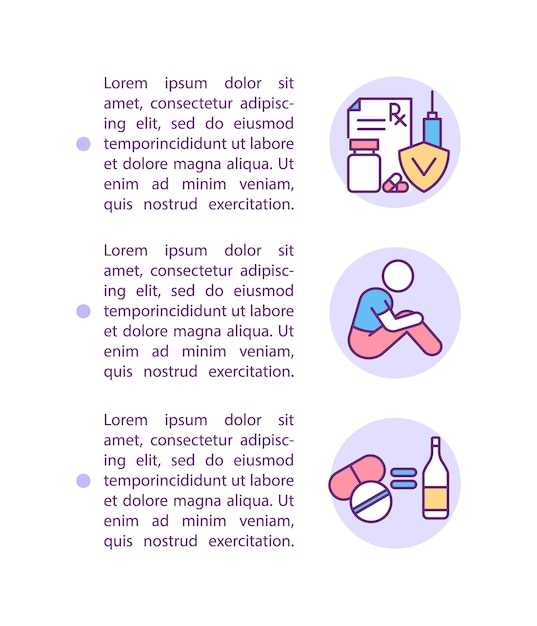
Looking for a solution to fertility issues? Learn how to use Clomid and Metformin to boost your chances of conception.
Unlock the secrets to improving ovulation and regulating insulin levels with this powerful combination.
Don’t let fertility challenges hold you back – take control of your reproductive health today!
Starting Clomid and Metformin

Clomid and Metformin are commonly prescribed together for the treatment of infertility in women with polycystic ovary syndrome (PCOS). Before starting Clomid and Metformin, it is important to consult with your healthcare provider to determine the appropriate dosage and duration of treatment for your specific situation.
Your healthcare provider will provide you with detailed instructions on how to take Clomid and Metformin, including when to start and how often to take the medication. It is important to follow these instructions carefully to ensure the best possible outcome.
Starting Clomid and Metformin may involve taking the medications on specific days of your menstrual cycle, typically beginning on the 3rd to 5th day of your cycle. Your healthcare provider will monitor your response to the medications through regular visits and may adjust the dosage as needed.
Starting Clomid and Metformin
Before starting Clomid and Metformin, it is important to consult with your healthcare provider. Your provider will evaluate your medical history and determine if these medications are appropriate for you. They will also discuss the recommended dosage and frequency of taking the medications.
It is important to follow the instructions given by your healthcare provider carefully. Typically, Clomid is taken orally for five days at the beginning of your menstrual cycle. Metformin is usually taken with meals to reduce the likelihood of gastrointestinal side effects.
Your healthcare provider may recommend starting Clomid and Metformin simultaneously or starting with one medication before adding the other. It is important to communicate any concerns or side effects you may experience while taking these medications with your healthcare provider.
Starting Clomid and Metformin can be an important step in your fertility journey, but it is essential to follow your healthcare provider’s recommendations and closely monitor your progress throughout the process.
Consultation with Healthcare Provider
Before starting the combination of Clomid and Metformin, it is crucial to consult with a healthcare provider. Your healthcare provider will assess your medical history, current medications, and overall health to determine if this treatment is appropriate for you.
What to Discuss with Your Healthcare Provider
- Provide detailed information about your menstrual cycles and any fertility issues you may be experiencing.
- Discuss any previous treatments or medications you have tried for infertility.
- Share any underlying medical conditions, such as polycystic ovary syndrome (PCOS) or insulin resistance, that may impact the effectiveness of Clomid and Metformin.
Your healthcare provider will create a tailored treatment plan based on your individual needs and monitor your progress while taking Clomid and Metformin. Regular check-ups and ongoing communication with your healthcare provider are essential to ensure the best possible outcomes.
Using Clomid and Metformin Together
Combining Clomid and Metformin can be an effective treatment strategy for women with PCOS who are struggling with ovulation issues. Clomid helps to stimulate ovulation by influencing the production of hormones in the body, while Metformin helps to regulate insulin levels, which can improve ovulation and fertility.
When using Clomid and Metformin together, it is important to follow your healthcare provider’s instructions carefully. They will provide guidance on the correct dosages and timing for each medication. It is common for women to start with a low dose of Clomid and gradually increase it as needed. Metformin is typically taken daily in conjunction with Clomid.
Potential Benefits:
- Improved ovulation
- Regulated menstrual cycles
- Increased chances of conception
Monitoring and Adjusting Dosages:
It is essential to monitor the effectiveness of Clomid and Metformin by tracking your menstrual cycles and ovulation patterns. Your healthcare provider may recommend blood tests or ultrasounds to assess your response to the medications. Based on these results, they may adjust your dosages or recommend additional treatments if needed.
Remember to communicate any concerns or side effects you may experience while taking Clomid and Metformin to your healthcare provider. They can provide guidance on managing any issues and make adjustments to your treatment plan as necessary.
Combining Dosages
When using Clomid and Metformin together, it is important to follow the prescribed dosages provided by your healthcare provider. Combining these medications can be an effective treatment option for women with ovulatory disorders.
Before starting treatment, your healthcare provider will determine the appropriate dosage of each medication based on your individual needs and medical history. It is essential to take both medications as directed to maximize the potential benefits and minimize the risk of side effects.
- Follow your healthcare provider’s instructions carefully on how to take both medications.
- Be consistent with the timing and dosage of Clomid and Metformin to achieve maximum effectiveness.
- Keep track of your medication schedule to ensure you are taking the correct dosages at the right times.
- Inform your healthcare provider of any side effects or concerns you may experience while taking Clomid and Metformin.
By combining the dosages of Clomid and Metformin as prescribed, you can increase your chances of ovulation and improve your fertility outcomes. It is essential to work closely with your healthcare provider to monitor your progress and make any necessary adjustments to your treatment plan.
Monitoring Effects

Monitoring the effects of using Clomid and Metformin together is essential for understanding how your body is responding to the medications. It is important to keep track of any changes in your menstrual cycle, ovulation patterns, and any side effects that may arise.
| What to Monitor | How to Monitor |
| Ovulation | Use ovulation predictor kits or track basal body temperature |
| Menstrual Cycle | Keep a calendar to note the start and end of each cycle |
| Side Effects | Document any changes in mood, weight, or physical symptoms |
By monitoring these aspects regularly, you and your healthcare provider can assess the effectiveness of the treatment and make any necessary adjustments to ensure the best possible outcomes.
Tracking Ovulation and Menstrual Cycles
Ovulation Tracking:
Tracking ovulation is crucial when using Clomid and Metformin to maximize the chances of conception. Ovulation typically occurs around 14 days before the start of your next period. Various methods can be used to track ovulation:
- Basal Body Temperature (BBT): Measure your BBT daily using a basal thermometer to detect a slight increase in temperature, indicating ovulation.
- Ovulation Predictor Kits (OPKs): These kits help predict ovulation by detecting hormone levels in your urine.
- Cervical Mucus Changes: Pay attention to changes in your cervical mucus consistency and texture, as it becomes clearer, stretchier, and more slippery near ovulation.
Menstrual Cycle Tracking:
Keeping track of your menstrual cycle is essential for monitoring the effects of Clomid and Metformin treatment and identifying any irregularities that may require medical attention. Use a calendar or a period-tracking app to note the start and end dates of your periods, as well as any symptoms or changes in flow intensity.
Regular menstrual cycles typically range from 21 to 35 days, with ovulation occurring around the middle of the cycle. Contact your healthcare provider if you experience irregularities in your menstrual cycle, such as prolonged bleeding, absence of periods, or severe cramping.
Potential Side Effects
Clomid and Metformin are generally well-tolerated by most individuals, but like any medication, they may cause some side effects. It’s important to be aware of these potential side effects when using these medications.
Common Side Effects
Some common side effects of Clomid may include hot flashes, mood swings, bloating, breast tenderness, and nausea. These side effects are usually mild and temporary.
Rare Side Effects
While rare, some individuals may experience more severe side effects such as visual disturbances, severe abdominal pain, shortness of breath, or chest pain. If you experience any of these symptoms, you should seek medical attention immediately.
| Side Effect | Description |
|---|---|
| Hot Flashes | Feelings of sudden warmth, often accompanied by flushed skin and sweating. |
| Mood Swings | Emotional fluctuations that can range from irritability to euphoria. |
| Bloating | Feeling of fullness and tightness in the abdomen due to fluid retention. |
| Breast Tenderness | Sensitivity or pain in the breasts, similar to premenstrual symptoms. |
| Nausea | Feeling of queasiness or discomfort in the stomach, sometimes leading to vomiting. |
If you experience any side effects while taking Clomid and Metformin, it’s important to talk to your healthcare provider. They can provide guidance on managing side effects or adjusting your treatment plan if necessary.
